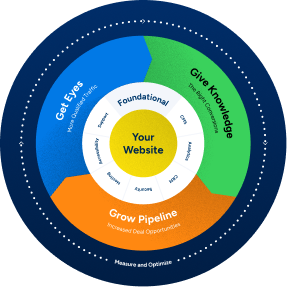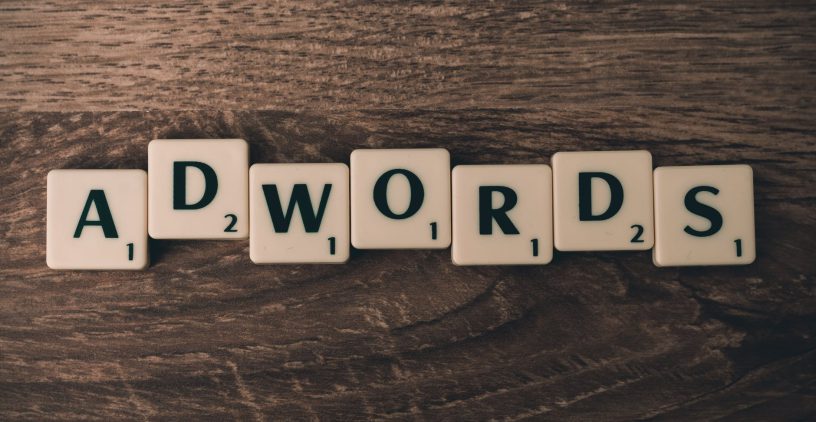Facebook and LinkedIn are social media powerhouses for businesses of all sizes. While other networks are newer and maybe more niche, both companies have ruled their respective corners of the web for well over 15 years and are major outlets for successful social media marketing.
When deciding your company’s marketing strategy, taking into consideration the audience and market are important. Save yourself time and your customers’ time by narrowing down the right marketing strategy.
Choosing Your Social Media Marketing Network for B2B
Of course, both networks have significant overlap, and you may want to run advertisements on both platforms according to your services.
However, in general, Facebook’s ad models support almost anything under the sun—within reason—while LinkedIn would be focused on educational or professional services.
Targeting
Demographics data is one of the primary strategies in designing who gets to see your ad. Facebook ads have a vast array of targeting features. One of these targeting features is identifying businesses that work in the same markets as you and directing your ads to them. Another Facebook ad targeting method for B2B advertising is showing trades that have made purchases with companies like yours.
Budgets
Both platforms offer CPC and CPM models. LinkedIn ads can cost about $5.26 for their average CPC and $6.59 for each CPM. Facebook is drastically lower. The CPC for Facebook ads is $1.36, and CPM is $8.60. However, your daily budget for LinkedIn ads will be higher.
Between Facebook and LinkedIn, LinkedIn is the more expensive network to advertise on. When comparing LinkedIn ads vs. Facebook ads, “Facebook offers more affordable options.
Design
The design of ads on LinkedIn and Facebook work similarly. This is because both platforms use LeadGen software. Both LinkedIn and Facebook use link ads, image ads, video ads, mail ads, and carousel ads. Facebook has interactive ad formats like slideshow, playable, canvas, stories, and collection.
Analytics
LinkedIn has in-depth analytic pages so you can track your company’s ad performance. LinkedIn has in-depth analytic pages so you can track your company’s ad performance over time. Under the “Tools” section, you can find metrics like CTR (click-through rate), CPC (cost per click), and impressions–an important data point if you want to understand which of your target audience members may be seeing and clicking on your ads.
After establishing a baseline for these metrics, you can experiment cautiously with ad copy to improve results. One of the most useful tools LinkedIn offers, though, is ad optimization for mobile devices. Your customers may be checking out your company’s ads when they go on their phones or tablets. If you target desktop users exclusively, you may miss out on a significant chunk of potential leads. It’s also easy to share your ads and post them across LinkedIn, so it can be a great channel for driving up new leads and generating some social buzz. LinkedIn’s self-serve ads are free for the most part, but there are some limitations on which accounts get charged for specific functions.
Facebook also provides detailed information on your B2B Facebook ads. Reach is a simple metric that tracks how many people have seen at least one of the ads in your campaign over a given time. For example, if you place an ad in News Feed with a 1% click rate and it has 200 impressions, its reach is 200 people. Reach can be expressed as either unique people or page results, depending on your campaign’s objective.
Unique reach tells how many different Facebook users have seen at least one of the ads. Page results measure the number of unique Facebook profiles, pages, or groups that show at least one ad.
Groups: Both platforms have dedicated groups for professionals. LinkedIn offers premium targeted marketing, with alumni groups and professional networks organized by company and location. Facebook groups use internal demographic data as well as member groups. If someone has their job title listed in their profile, your ads can reach them specifically on both Facebook and LinkedIn.
Members: LinkedIn has 810 million users. From the very beginning, it was a “serious” network within the professional niche.
Features: LinkedIn has business profiles that can be used for recruiting, job searching, and candidate matching. Users on LinkedIn often have very specific career goals in mind. LinkedIn is ideal for any business that wants to target a professional audience.
Facebook has 1 billion users. It started out as a social media site catering to college students and quickly set its roots within the entertainment and advertising industries.
Features: Business profiles, pages, events, and groups; Facebook has all your social media marketing needs covered under one roof. Facebook is ideal for any business that wants to reach a large audience organically.
How Can You Use Social Media Marketing?
Before you start cranking up your ad budget, knowing how your business can benefit from each platform is important.
LinkedIn:
The primary way most professionals and businesses use LinkedIn is for recruiting and researching potential hires/candidates. Many people turn to the site to find a job or learn about an individual’s career.
Because of this, LinkedIn is beneficial for finding new employees, connecting with current ones, and providing education. This makes LinkedIn ideal for any business with a professional workforce or who wants to gain some insight into its target audience.
Facebook:
When it comes to Facebook’s advertising platform, the possibilities are endless. It can be used for entertainment, education, sale of goods/services, and direct marketing.
Because it has such a diverse range of uses within its ad platform, Facebook is ideal for any business that just wants to reach a large audience organically.
Which Social Media Should You Use?
For LinkedIn “B2B LinkedIn ads’: If you are looking for a professional touch to your marketing strategy and want to target potential employees, then LinkedIn is the way to go.
For Facebook: If you are looking for a broad audience and don’t necessarily need it to be all professionals, Facebook would be your best bet.
Facebook and LinkedIn can both help your business grow depending on what you are offering. Understanding the different features of each social media platform is essential in helping you reach your audience.
Both platforms have proven to be effective for business but creating a great ad strategy starts with knowing your audience and what it wants.
Do you need help with your social media marketing? Contact us today!

